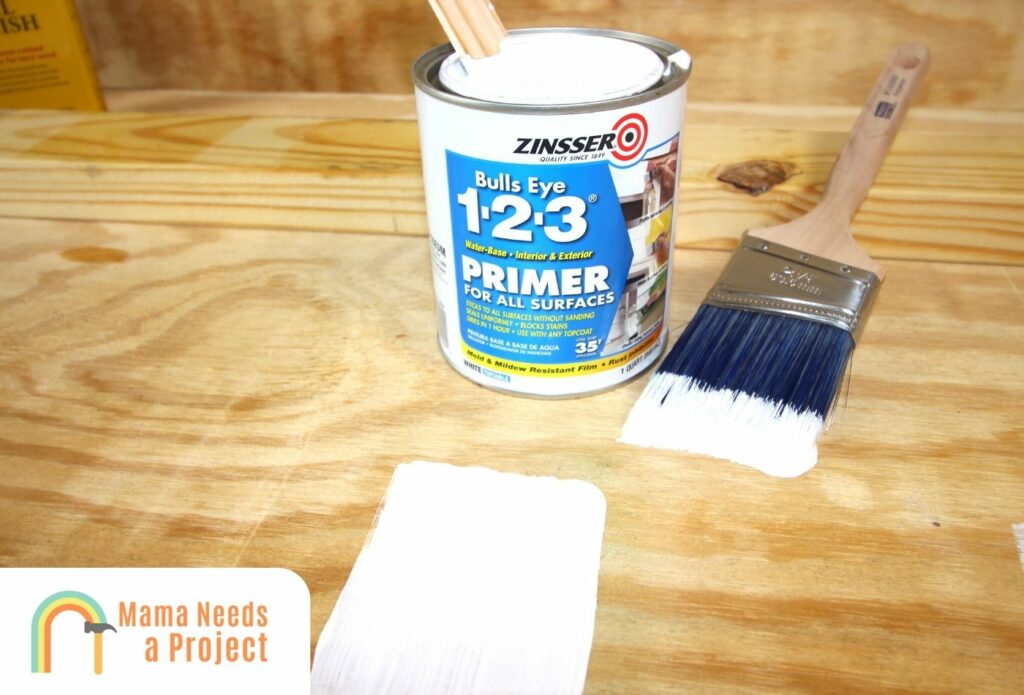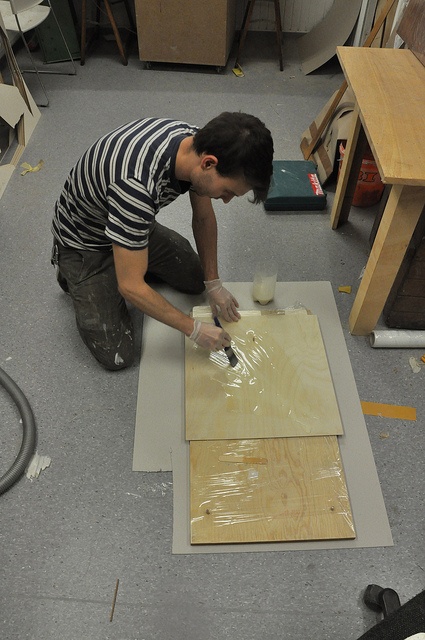Are you wondering if you need primer for plywood? Well, you’ve come to the right place! Painting plywood is a fantastic way to add color and protection to your projects, but whether or not you need primer depends on a few factors.
Painting plywood without primer is like going to battle without armor—it leaves your project vulnerable. Primer acts as a strong foundation, ensuring that your paint adheres properly, and it helps to seal the surface, preventing any moisture or stains from ruining your hard work.
So, the answer to the question “do I need primer for plywood?” is a resounding yes! Using primer before painting plywood is crucial for getting professional-looking and long-lasting results. It’s a small step that makes a big difference in the overall quality of your finished project.
When working with plywood, using a primer is recommended to ensure a smooth and durable finish. Primers help seal the surface, prevent wood knots from bleeding through, and promote better adhesion. Before painting plywood, make sure to clean it thoroughly and sand any rough areas. Apply a coat of primer, following the manufacturer’s instructions, and let it dry completely before proceeding with your paint job. Remember, using primer will enhance the longevity and appearance of your plywood project.

Do I Need Primer for Plywood? – A Comprehensive Guide
Are you wondering whether you need to use primer when working with plywood? It’s a common question among DIY enthusiasts and carpenters alike. In this comprehensive guide, we will explore the benefits of using primer on plywood, the steps to properly prime plywood, and tips for achieving the best results. Whether you’re building furniture, cabinets, or any other project involving plywood, this guide will help you make informed decisions and achieve professional-quality finishes.
Benefits of Using Primer on Plywood
Priming plywood before painting or staining offers several key benefits. First and foremost, primer improves the overall adhesion of paint or stain to the plywood surface. Plywood has a porous nature, and the primer acts as a sealer, filling in the wood’s pores and creating a smoother, more even surface. This improves the durability and longevity of the finish, reducing the chances of paint or stain flaking or peeling over time.
Additionally, primer helps to prevent the plywood from absorbing excessive amounts of paint or stain. Plywood is known to be more absorbent than other surfaces, and without primer, you may find yourself using significantly more paint or stain to achieve the desired coverage. By applying primer, you can save on paint or stain costs and achieve a more consistent and vibrant finish.
Furthermore, using primer on plywood can help to hide imperfections and blemishes in the wood. Plywood can have variations in color, grain pattern, and surface texture, and primer acts as a barrier, creating a uniform base for your topcoat. This is particularly important when working with high-gloss finishes or when aiming for a flawless, professional look.
Step-by-Step Guide to Priming Plywood
Now that you understand the benefits of using primer on plywood, let’s dive into the step-by-step process of priming your plywood surfaces. Follow these instructions to ensure a successful priming job:
- Clean the plywood: Begin by thoroughly cleaning the plywood surface to remove any dirt, dust, or grease. Use a mild detergent and water solution, and scrub gently with a soft brush. Rinse with clean water and allow the surface to dry completely before proceeding.
- Prepare the primer: Choose a high-quality primer suitable for plywood. Consider using an oil-based primer for better adhesion and durability. Stir the primer thoroughly to ensure an even consistency before application.
- Apply the primer: Use a brush, roller, or paint sprayer to apply a thin, even coat of primer to the plywood surface. Work in small sections, starting from one edge and moving across the surface. Apply light pressure to spread the primer evenly and avoid drips or runs.
- Allow the primer to dry: Follow the manufacturer’s instructions for drying time. Typically, it takes around 24 hours for the primer to dry completely. Avoid touching or applying any pressure on the primed surface during the drying period.
- Sand the primed surface (optional): If you’re looking for an ultra-smooth finish, you can lightly sand the primed surface using fine-grit sandpaper. This will help to eliminate any brush or roller marks and create a more polished look.
-
Key Takeaways: Do I Need Primer for Plywood?
- 1. Primer is not always necessary for plywood, but it can provide better adhesion and durability for paint.
- 2. If the plywood has a rough surface or is prone to stains, using a primer can help create a smoother and more even finish.
- 3. Applying primer before painting plywood can also help seal the wood and prevent moisture damage.
- 4. Primer is particularly important when painting plywood with water-based or latex paints.
- 5. Transparency or opacity of the primer depends on personal preference and desired paint color.
Frequently Asked Questions:
Are you wondering whether you need to use primer for plywood? We’ve got you covered! Here are some commonly asked questions about using primer on plywood and the answers you need to know.
1. How important is primer when painting plywood?
Primer is crucial when painting plywood because it helps to create a smooth and even surface for the paint to adhere to. Plywood has a porous surface that can absorb paint unevenly, resulting in a patchy or blotchy finish. Primer acts as a sealant, filling in the pores and preventing the paint from being absorbed too quickly. It also enhances the durability and longevity of the paint job.
Additionally, primer helps to improve the adhesion of the paint, ensuring that it sticks properly to the plywood surface. This is especially important if you’re painting plywood that has been previously stained or coated with a finish. Primer provides a bonding layer, allowing the paint to adhere better and preventing it from peeling or flaking over time.
2. Can I skip using primer and paint plywood directly?
In general, it is not recommended to skip using primer when painting plywood. While it may be tempting to save time and effort by skipping this step, it can lead to subpar results. Without primer, the paint may not adhere properly to the plywood surface, resulting in an uneven or blotchy finish. Additionally, the paint may not last as long and could be prone to chipping or peeling over time.
However, there are some exceptions to this rule. If you’re using a paint specifically designed for use on bare wood and plywood, it may have built-in priming properties. In this case, you may be able to skip the separate primer application. However, it’s still important to follow the manufacturer’s instructions and recommendations to ensure the best results. If in doubt, it’s generally safer to apply a coat of primer before painting plywood.
3. What type of primer should I use for plywood?
When choosing a primer for plywood, it’s important to select a product that is compatible with both wood surfaces and the type of paint you plan to use. A high-quality acrylic or latex-based primer is generally recommended for plywood. These types of primers provide excellent adhesion, are easy to apply, and dry quickly. They also create a good base for both water-based and oil-based paints.
If you’re painting exterior plywood or plywood that will be exposed to moisture or harsh conditions, consider using a primer that has additional weather-resistant or moisture-resistant properties. This will help to protect the plywood from potential damage and ensure the longevity of your paint job. Always check the manufacturer’s recommendations for the specific primer you choose and follow the instructions for application.
4. Do I need to sand the plywood before applying primer?
In most cases, it is recommended to sand the plywood before applying primer. Sanding helps to smooth the surface, remove any rough patches or imperfections, and create better adhesion for the primer and paint. However, the extent of sanding required may vary depending on the condition of the plywood and the type of finish you’re aiming for.
If the plywood has a rough surface or visible imperfections, start by sanding it with medium-grit sandpaper to create a smoother base. Then, follow with fine-grit sandpaper to achieve an even smoother finish. Sanding in the direction of the wood grain will help to minimize visible scratch marks. After sanding, make sure to remove any dust or debris before applying the primer.
5. Can I apply multiple coats of primer on plywood?
While it is not necessary to apply multiple coats of primer on plywood, there may be instances where it could be beneficial. If the plywood has a highly porous surface or if you’re trying to cover up dark stains or existing paint, applying an extra coat of primer can help to ensure better coverage and a more even finish.
However, keep in mind that excessive primer coats can build up on the surface and may affect the final appearance and texture of the paint. It’s important to strike a balance by applying an adequate amount of primer to create a smooth and sealed surface without overdoing it. Follow the manufacturer’s recommendations for the specific primer you’re using, and if you’re unsure, it’s always best to consult a professional or seek advice from your local paint supplier.

Buy The RIGHT Primer
Summary
So, do you really need primer for plywood? Here’s what you need to know. Primer is not always necessary for plywood, especially if it is already smooth and clean. However, if the plywood has rough surfaces or you want to achieve an even finish, priming can be helpful. Primer also helps the paint to adhere better and last longer. So, consider your plywood’s condition and the desired outcome before deciding whether to use primer or not.
In conclusion, primer can be beneficial for plywood if you want a smooth finish and long-lasting paint. Make sure to assess the plywood’s condition and your desired outcome before making a decision. Happy painting!
